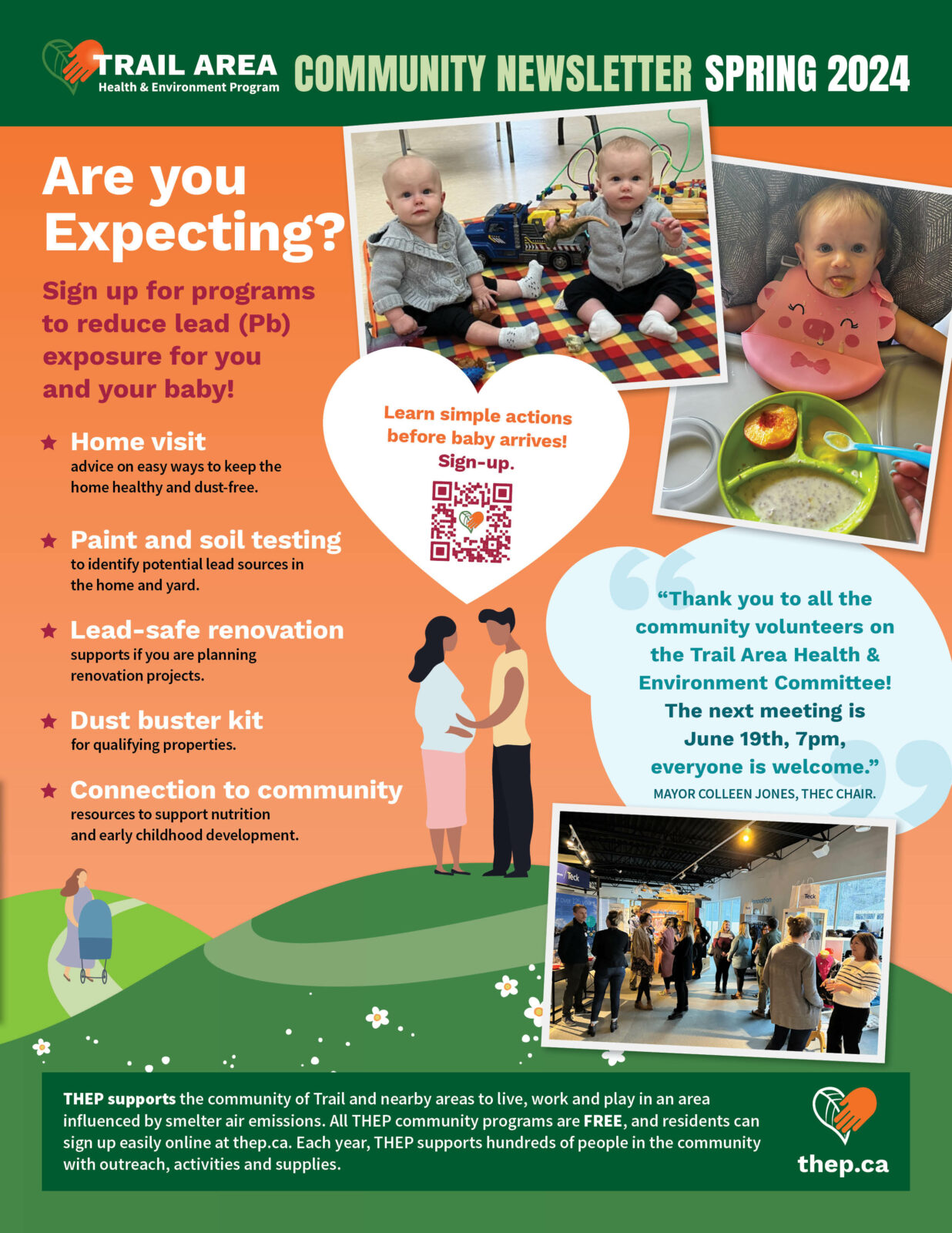For this study, the Trail Community Lead Task Force worked with leading lead exposure researchers from the University of Cincinnati, who had conducted similar work at lead mining and smelting sites in the USA. Samples of soil, indoor and outdoor dust, yard dust, street dust, paint and home-grown vegetables were collected from 176 homes in Trail. Blood lead samples were collected for 241 children living in those homes. Also, a questionnaire on potential lead exposure risk factors was completed with each family.
Advanced statistical methods were used to build a model of the dominant pathways of lead exposure using all the collected data. Indoor house dust lead was found to be the dominant sour of lead exposure. The model suggested that lead from outdoor air was transported into homes from exterior dust and soil, via both tracking from exterior dust and soil through doors, and from movement of air through windows. The analysis suggested that most exposure, particularly for children under 18 months of age, was occurring indoors, due to contact with dust on surfaces. Time spent outdoors and yard soil lead concentrations were predictors of higher blood lead levels in children older than 18 months. There were no significant associations between blood lead and paint concentrations of lead, eating home-grown vegetables, or having a parent working in lead industry. Looking at different areas of Trail, time spent outdoors and soil lead concentration were only significant predictors of blood lead in the areas nearest to the smelter. Children who lived on properties with a higher percentage of bare soil tended to have higher blood lead levels than those where soil was mostly covered.

